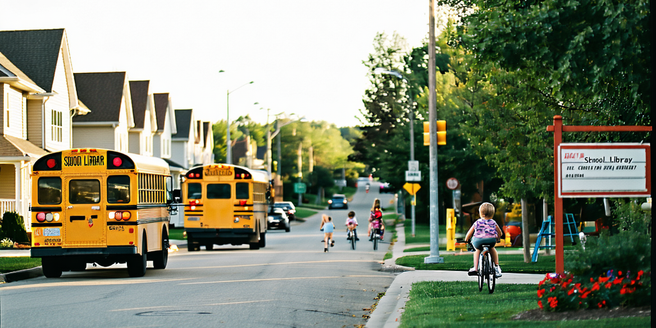Apartment Hunting For Families

Identifying Family-Friendly Neighborhoods
When hunting for an apartment suitable for families, it’s crucial to research neighborhoods that cater to the needs of children and parents alike. Look for areas with good schools, parks, and family-friendly activities. Assess the community vibe through neighborhood events or local social media groups. Safety is a top priority; thus, check crime rates and visit the area at different times to gauge safety concerns. Access to essential services such as healthcare, grocery stores, and public transport is also vital. Walking or driving around the neighborhood can give insight into the friendliness of the community. Proximity to work and extended family can also influence your decision. Gather information from local residents or online forums to understand the neighborhood’s lifestyle better, ensuring it aligns with your family’s needs and values.
Setting a Realistic Budget for Your Family
Setting a realistic budget is a critical step in apartment hunting for families. Begin by evaluating your monthly income and expenses to determine how much you can afford to spend on rent. Consider additional costs associated with renting, such as utilities, internet, and maintenance fees. Factor in one-time expenses like moving costs and security deposits. Budgeting allows you to narrow down options and prevents financial strain in the long run. Utilize online rent calculators and compare prices in various neighborhoods to ensure you are making an informed decision. It’s also beneficial to build a slight buffer into your budget for unexpected expenses. By clearly understanding your financial limitations, you can focus your search on apartments that provide the best amenities and quality of life for your family within your means.
Essential Apartment Features for Families
Choosing the right apartment involves focusing on features that meet the needs of your family. Prioritize sufficient space, ensuring enough bedrooms for everyone. Look for open layouts allowing supervision of young children easily. A family-friendly apartment should have adequate storage, possibly with extra closets or a pantry. The availability of in-unit laundry facilities can simplify household chores. Safety features, such as secure windows and balconies, are essential. Consider childproofing potential and proximity to playgrounds or kid-friendly areas. Noise levels are another factor, ensuring a peaceful environment for children to rest and study. Access to communal facilities like pools or play areas can also enhance family life. Seek properties with reliable maintenance services to swiftly address any issues that may arise, ensuring a comfortable living environment.
Navigating School and Daycare Options
Finding the right school or daycare is a critical aspect of apartment hunting for families. Start by researching the schools in potential neighborhoods, focusing on their ratings, curriculums, and reviews from other parents. Consider visiting schools to get a feel for the environment and speak to teachers about educational approaches. Evaluate the logistics of the morning commute, making sure it’s feasible and stress-free. For daycare, explore local options early as spaces can be limited. Look into facilities providing flexible hours to accommodate your family’s schedule. Ask about staff credentials, safety protocols, and educational activities provided. Availability of after-school programs and extracurricular activities might also influence your decision. Connecting with other parents can provide personal insights, helping ensure that the choices made best align with your family’s educational values and needs.
Safety Considerations for Family Apartments
Safety is paramount when choosing an apartment for your family. Begin by assessing the building’s security features such as controlled access, surveillance systems, and well-lit common areas. Check the functionality of locks on doors and windows in each unit. Fire safety measures, including smoke detectors, fire extinguishers, and clear emergency exits, should also be in place. The apartment’s location within a neighborhood affects safety; researching crime statistics and visiting the area at various times can provide insights. Consider the proximity to emergency services like hospitals and police stations. For families with children, verify that balconies, staircases, and windows are securely child-proofed. Ensuring that communal play areas are safe and well-maintained further assures peace of mind. A thorough safety assessment helps in choosing an apartment that supports your family’s well-being.
Preparing for the Move with Children
Moving can be a challenging experience for children, so proper preparation is crucial. Engage children in the moving process by explaining the reasons for the move and involving them in decisions like room arrangements or decoration ideas. Maintain familiar routines before, during, and after the move to ensure stability. Consider visiting the new apartment and neighborhood before moving day to familiarize kids with their new environment. Plan the logistics of the move, ensuring you have essentials packed separately for easy access. Enlist professional movers, if possible, to alleviate stress. Allow children to pack a special box with their favorite toys or possessions to keep with them during the move. Supporting emotional adjustments is as crucial as the physical move; encourage open communication and provide reassurance about the positive aspects of the transition.